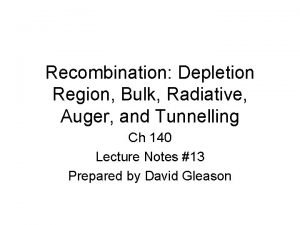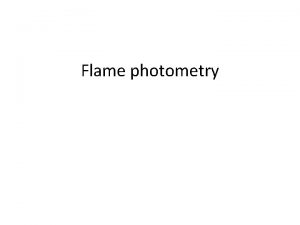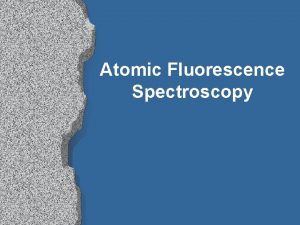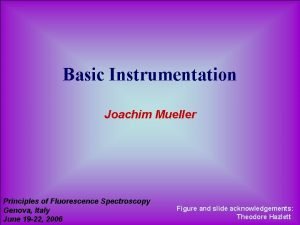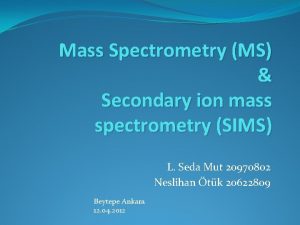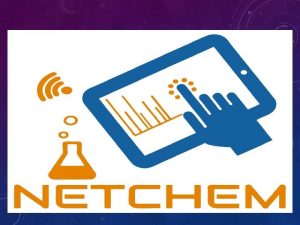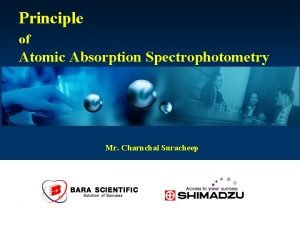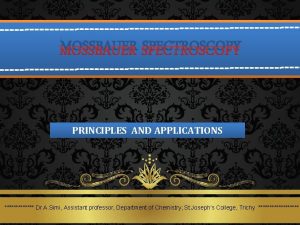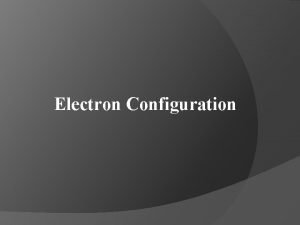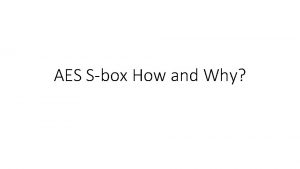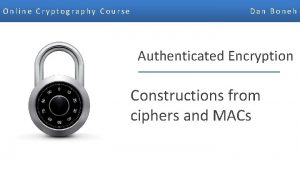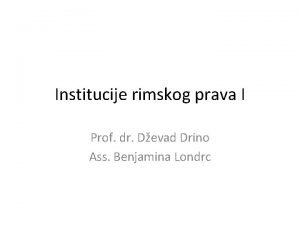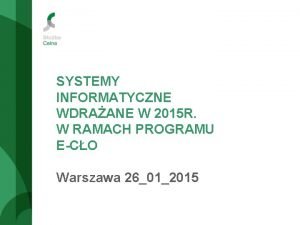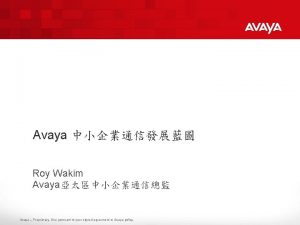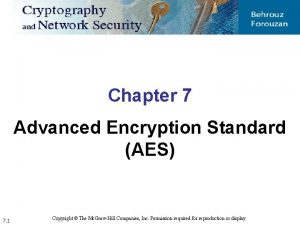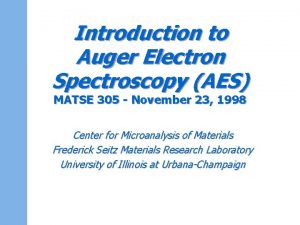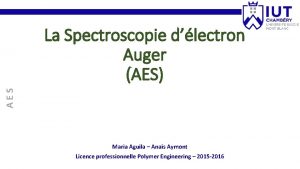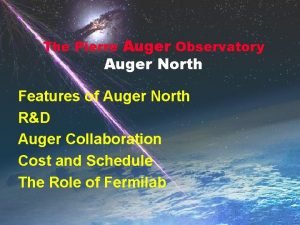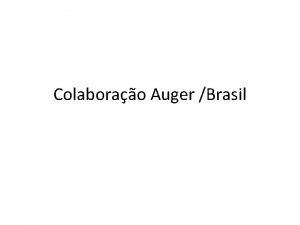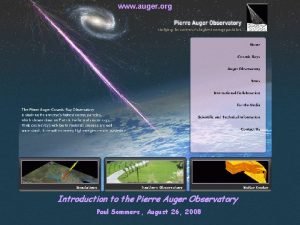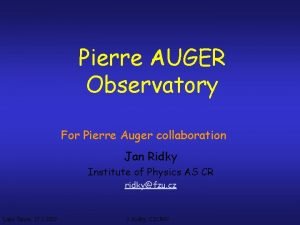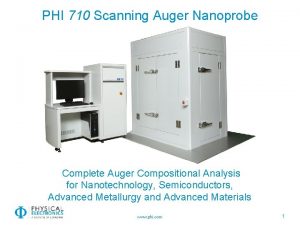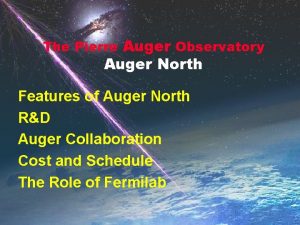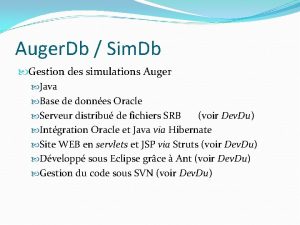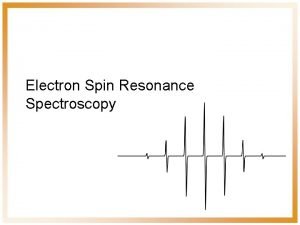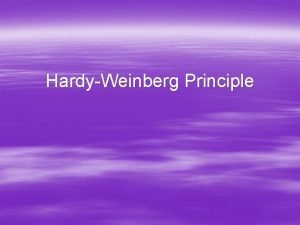Auger Electron Spectroscopy AES Principle of AES n



















- Slides: 19

Auger Electron Spectroscopy (AES)

Principle of AES n A fine focused electron beam bombards the sample and ejects an electron of the inner shell of the atom. n This vacancy must be refilled by an electron from a higher energy level. n When the higher energy electron fills the hole, the release of energy is transferred to an electron in an outer orbit electron. n That electron has sufficient energy to overcome the binding energy and the work function to be ejected with a characteristic kinetic energy. n The ejected electron is referred to as an Auger electron after Pierre Auger who first discovered it in 1925.

Principle of AES n The Auger electron has an energy given by: EAuger = EK – EL 1 – EL 2, 3 - where EK, EL 1 and EL 2, 3 are the binding energies of the K 1, L 1 and L 2, 3 electron orbits of the atom. is the work function.

Principal Auger Electron Energies

Auger Electron Yield

Direct and Differential Spectra

Direct and Differential Spectra

Chemical Effects

Chemical Effects

Spectrometer

Cylindrical Mirror Analyzer (CMA) n Secondary electrons passing through a slit in the inner cylinder are deflected by a negative potential applied to the outer cylinder and pass through the exit slit onto an electron multiplier where they are detected. n For any given potential applied to the cylinder, only electrons with specific energy will pass through the exit slit. n A spectrum is built up by sweeping the outer cylinder potential.

Spectrometer

Spectrometer

Auger Maps

Analysis of Surface Contamination

Sputter Profiling

Sputter Profiling

Sputter Profiling

References n J. M. Walls, Editor, Methods of Surface Analysis: Techniques and Applications, Cambridge University Press, Cambridge, 1989. n J. P. Sibilia, Editor, A Guide to Materials Characterization and Chemical Analysis, VCH Publishers, Inc. , New York, 1988. n P. E. J. Flewitt and R. K. Wild, Physical Methods for Materials Characterization, Institute of Physics Publishing, Bristol, 1994. n D. Briggs and M. P. Seah, Practical Surface Analysis by Auger and X-ray Photoelectron Spectroscopy, John Wiley and Sons, New York, 1983.
 Auger electron
Auger electron Carpentry tools and equipment
Carpentry tools and equipment Dont que
Dont que What is auger recombination
What is auger recombination Types of flame photometry
Types of flame photometry Atomic fluorescence spectroscopy principle
Atomic fluorescence spectroscopy principle Principle of fluorescence spectroscopy
Principle of fluorescence spectroscopy Mass spectrometry positive and negative ion mode
Mass spectrometry positive and negative ion mode Principles of atomic emission spectroscopy
Principles of atomic emission spectroscopy Atomic absorption spectrophotometry principle
Atomic absorption spectrophotometry principle Homocyclic diene component
Homocyclic diene component Principle of mossbauer spectroscopy
Principle of mossbauer spectroscopy Hund's rule vs pauli exclusion principle
Hund's rule vs pauli exclusion principle Sec
Sec Aes sbox
Aes sbox Aes ocb
Aes ocb Gesta per aes et libram
Gesta per aes et libram Portal komunikacyjny aes / ais
Portal komunikacyjny aes / ais Avaya aes server
Avaya aes server Aes 7
Aes 7



